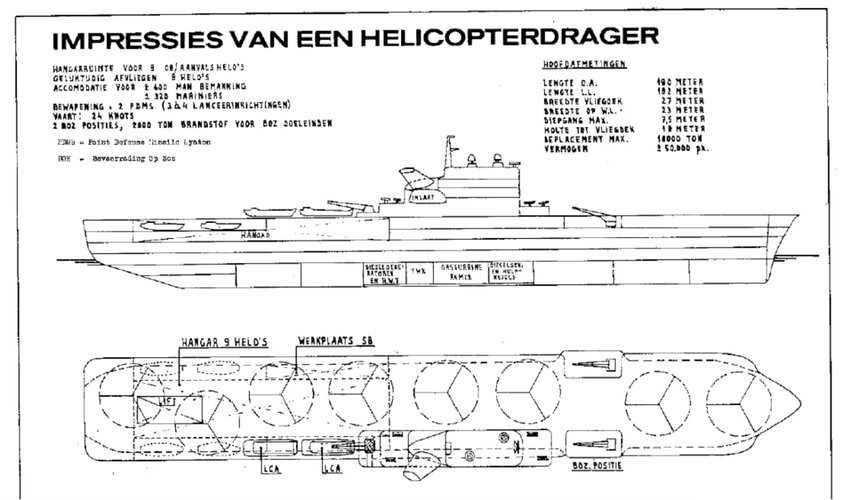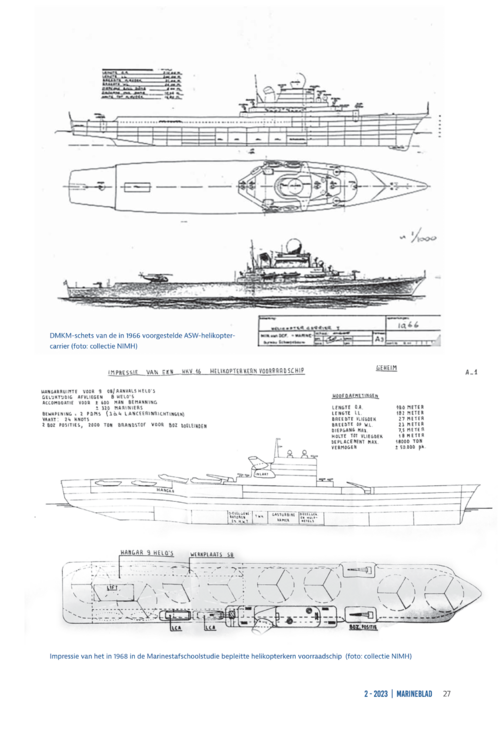Wait, the Netherlands navy wanted Skipjack SSNs ? that's amazing. 1960's, how we love you.
Besides this all three options are interesting in their own right. In fact they are kind of British, French and Italian navies alike.
Yes they did! I will auto-translate a part of the article.
Discussions in the naval leadership, US advice, national strategic position and the Royal Navy
At the start of 1966, a naval staff cost study was carried out. The two most likely for the naval leadership core segment scenarios for the new fleet, operation of an SSN versus that of a helicopter carrier to replace the HNLMS Karel Doorman was central to this.
A nuclear-powered submerged vessel with sonar had, the study found, greater chances of tracking nuclear Soviet submarines than a frigate with Variable Depth Sonar or a (large) helicopter with dipping sonar. The last airborne weapon system did provide in a longer range, but considering flight operations from surface ships served as defenses against the growing maritime Soviet air threat to be taken into account. Large carriers with also ditto crews laid in this respect in the study anyway against SSNs, which did not know this defensive problem.
The Koninklijke Marine (KM) submitted the study to the US Navy (USN) with with a view to the acquisition of nuclear knowledge to build Skipjack-class SSNs. The prudent Americans, wary of sharing this knowledge with allies, suggested alternatives to an SSN:
• modernize Doorman, equip it with 25 large helicopters, and replace the LRMP Lockheed Neptune by P-3 Orion;
• remove Doorman and deploy cruiser De Zeven Provinciën as (helicopter-carrying) core Hunter Killer Group to acquire frigates, as well as P-3 Orions;
• replace Lockheed Neptune with P-3 Orion, construction 1-2 helicopter carriers after removing Doorman.
The US Navy told the KM that calculated over ten years, the purchase and operating costs of four Skipjack class SSNs were the most expensive and those of forming one (renovated) De Zeven Provinciën Hunter Killer Group it cheapest. CMS VADM A.H.J. van der Schatte Olivier pointed out that if SSNs were dropped, given the ASW main task emphasized in the 1964 Defense Memorandum, certainly after the
removal of the Doorman, more escort ships and LRMPs were required to compensate, and not so much the alternatives suggested by the USN.
------
In the article they talk about two variants of the fleet composition
Fleet composition 1
• The KM had an Ocean and a North Sea fleet.
• The Ocean Fleet included groups operating independently as well as in operated in an alliance and as a group first of all knew a deterrent role and a task in 'great war'. The units also had to be suitable in a smaller context or an independent crisis management role
within and outside NATO territory.
• The North Sea fleet included mine countermeasures groups and patrol vessels.
• The submarine fleet had SSNs at its core.
• Acquisition of one light helicopter type operating from all frigates and supply ships.
• Introduction of 'North Sea' patrol vessel (later, greatly enlarged M-frigate) that fulfilled various tasks thanks to containers.
Fleet composition 2
This involved an alternative composition should the acquisition of SSNs fail. The same workload had to be done with other resources. Although the North Sea fleet composition remained intact, changed that of the Ocean Fleet in that at active (submarine) detection at long range underwater, means other than the SSN had to be resorted to.
The MP frigate lacked such capacity anyway. The conventional submarine possessed too low underwater travel and too little availability power for active sonar detection. The diesel-electric submarines would therefore not operate in cooperation with the ocean groups, but independently, or in coordination with LRMPs see commitment to reconnaissance and actions against above and underwater targets.
Large helicopters equipped with detection/relocation systems classification equipment, as well as with assault weapons, would provide the desired active underwater detection capability in Fleet Composition 2. This helicopter was too large to operate from the GW and MP frigates. On those ships, the lighter attack (standard) helicopter, the later Westland Lynx, maintained.
The large helicopter operated from the supply ship. This had to have about a ‘larger deck and hangar space’. In this second composition advocated the drafters of the fleet plan for a "more large helicopter-oriented design" of a third supply ship to be acquired, and in a more extensive modernization based on this type of helicopter of the second supply ship, which entered service in 1976 take on HNLMS Zuiderkruis. The descriptions regarding a supply ship with facilities for a large helicopter, evoke echoes with those of the summer 1968
'helicopter carrier' advocated by the Naval Staff.
The second scenario was largely implemented after the failure of the final acquisition of SSNs in 1972.
Largely, because the third larger supply ship did not materialize due to budget problems, nor did the modernization of the HNLMS Zuiderkruis for the benefit of extensive deployment of large ASW helicopters, because the KM did not acquire either.
Although the latter vessel often operated with such helicopters during international exercises, this concerned Westland Sea Kings of the Royal Navy. As for the LRMPS In the early 1980s, the phasing out of the Lockheed Neptune as well as the Bréguet Atlantic and purchase of modern Lockheed P3-C Orions.



